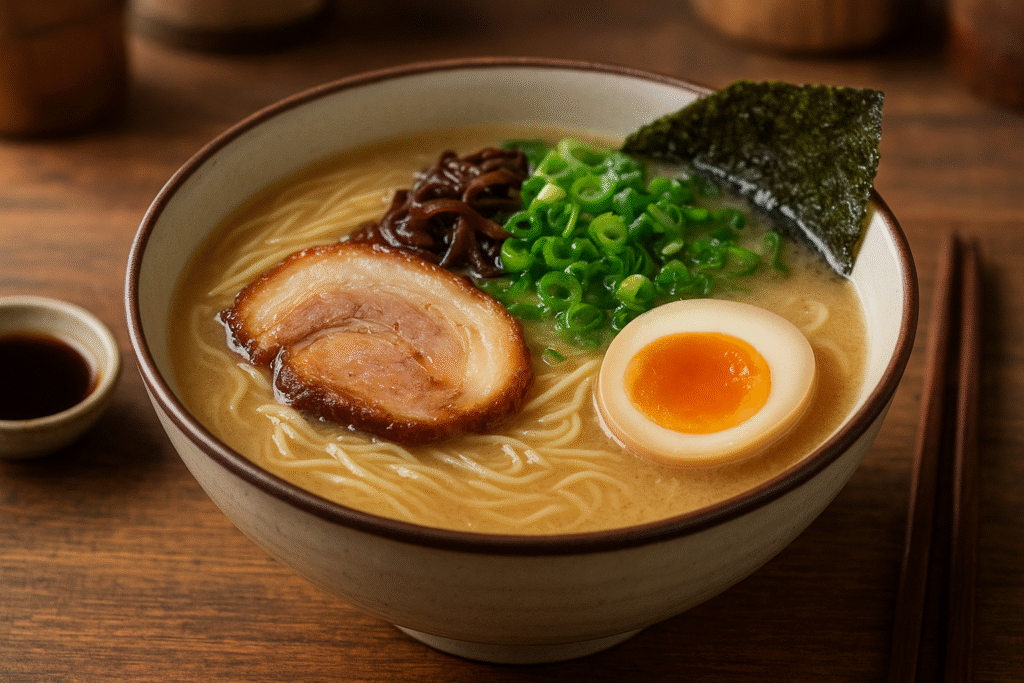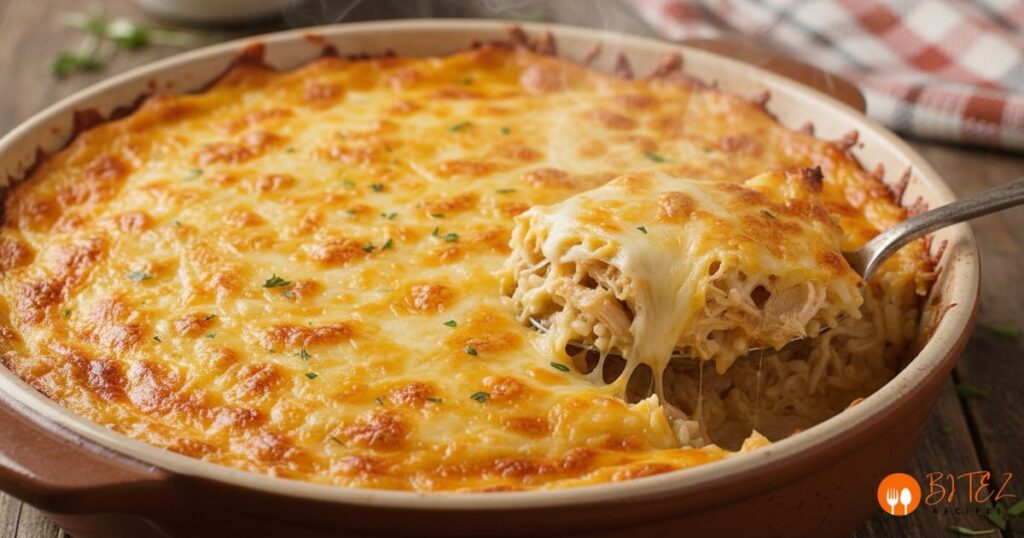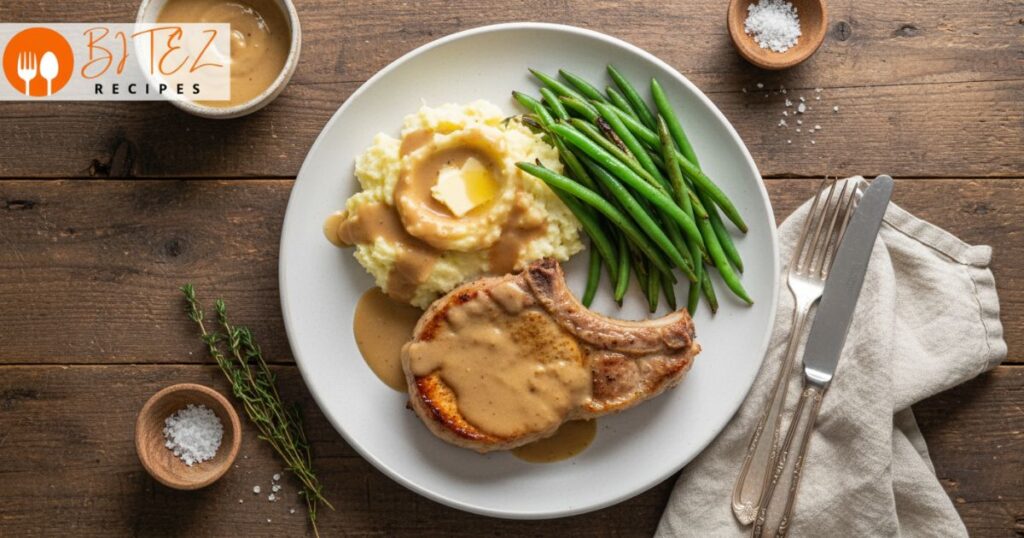Introduction
The Hakata ramen recipe is famous for its creamy tonkotsu broth, thin noodles, and rich toppings. Many people in the USA search for ramen shops near me in Dallas, Frisco, or Lewisville, but nothing beats the taste of homemade. Cooking it yourself allows you to control flavor and quality. ( Homemade Ramen Recipe )
This style of ramen comes from Fukuoka in Japan. Now, you can find it in places like Addison and Allen, where shops use imported brands like marutai and sanpo. Still, by learning the recipe, you’ll enjoy the original taste without depending on menus or customer reviews.
What is Hakata Ramen
Hakata ramen is a pork-based noodle soup. The broth is thick and white, made by boiling pork bones for hours until the flavor becomes deep. The noodles are very thin and straight, designed to cook fast and stay firm.

Toppings usually include sliced pork, mushrooms, green onions, and soft eggs. In Frisco or Addison, menus often list garlic oil and sesame seeds as extras. But if you want the original flavor, keep it simple and balanced.
Origin of Hakata Ramen (Fukuoka, Japan)
This ramen started in Fukuoka, Japan, where people wanted cheap food that was both fast and filling. Thin noodles made sense because they cooked in seconds. Broth from pork bones gave energy and warmth.
From Fukuoka, Hakata ramen spread across Japan and later to America. Today, you can find it in Dallas or even on Gaylord Parkway Frisco TX, where locals love the creamy tonkotsu flavor. Customers leave glowing reviews about how it reminds them of Japan.
Key Features of Hakata Ramen
Rich Tonkotsu Broth
The tonkotsu broth is the soul of Hakata ramen. Pork bones are boiled on high heat for hours. This releases fat, marrow, and collagen, which makes the soup thick and cloudy. The taste is strong but smooth.
In the USA, bones are easy to find in Asian markets around Lewisville or Allen. Shops often sell pork neck or leg bones, which are perfect for broth.
Ultra-thin Noodles
Unlike other ramen styles, Hakata noodles are very thin and straight. They cook in less than a minute and stay firm inside the hot broth. That texture makes the eating experience different from regular ramen.
You can find thin noodles in stores across Dallas or order marutai and sanpo brands online. People often search “ramen near me” just for this special noodle style.
Toppings: Chashu, Kikurage, Negi
The toppings give color and balance. Chashu pork adds richness, kikurage mushrooms bring texture, and green onions cut through the fat. A soft-boiled egg is another classic.
Many menus in Addison or Frisco also add garlic oil or sesame seeds. These toppings often get the best reviews from customers who want extra flavor.
Ingredients You’ll Need
| Ingredient | Notes for USA cooks |
|---|---|
| Pork bones | Best for tonkotsu broth |
| Thin straight noodles | marutai, sanpo, or fresh options |
| Toppings | Eggs, pork belly, mushrooms, scallions, nori |
| Extras | Garlic oil, sesame seeds |
In Lewisville or Allen, Asian grocery stores often carry these items. If not, check online for imported noodles and sauces.
How to Make Tonkotsu Broth
Step-by-Step Cooking
- Boil pork bones for 5 minutes, then rinse.
- Place bones in fresh water and boil on high heat.
- Keep cooking for 12–15 hours, adding water as needed.
- Stir often to release marrow and fat.
This process creates the signature creamy white soup.
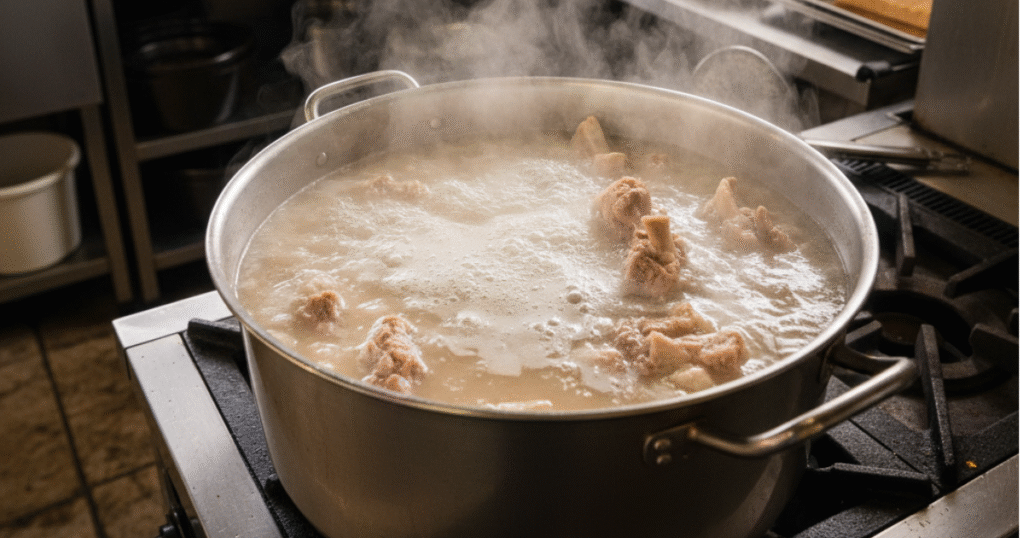
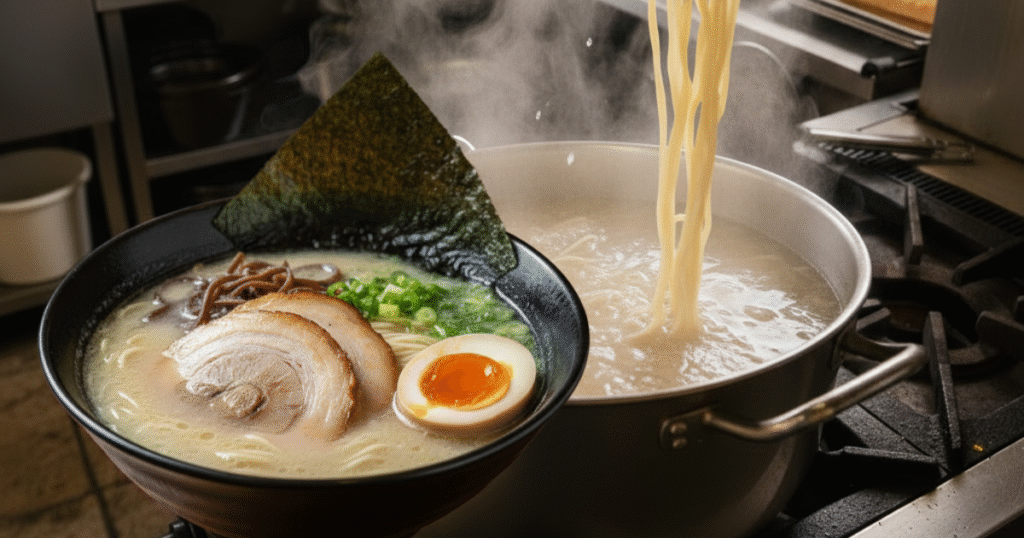
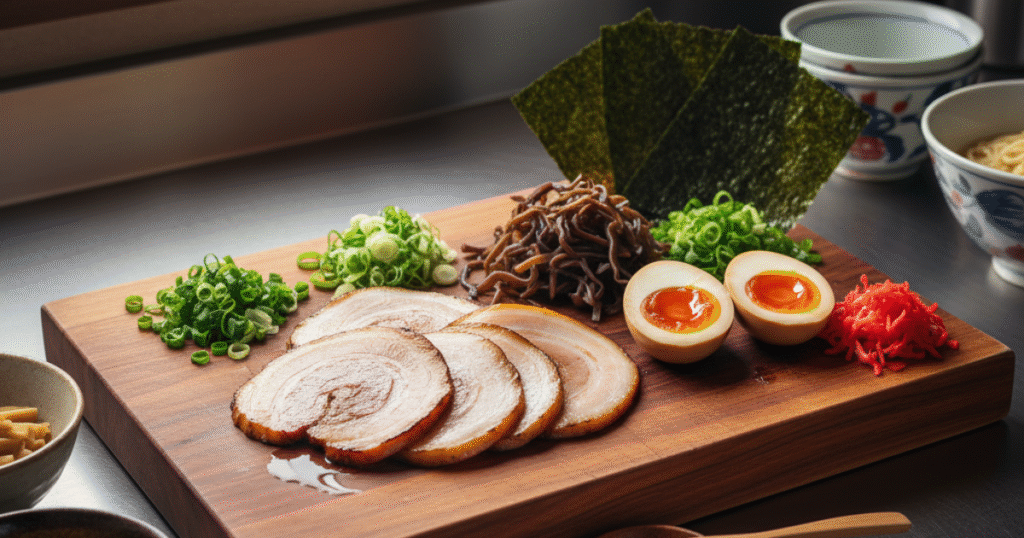
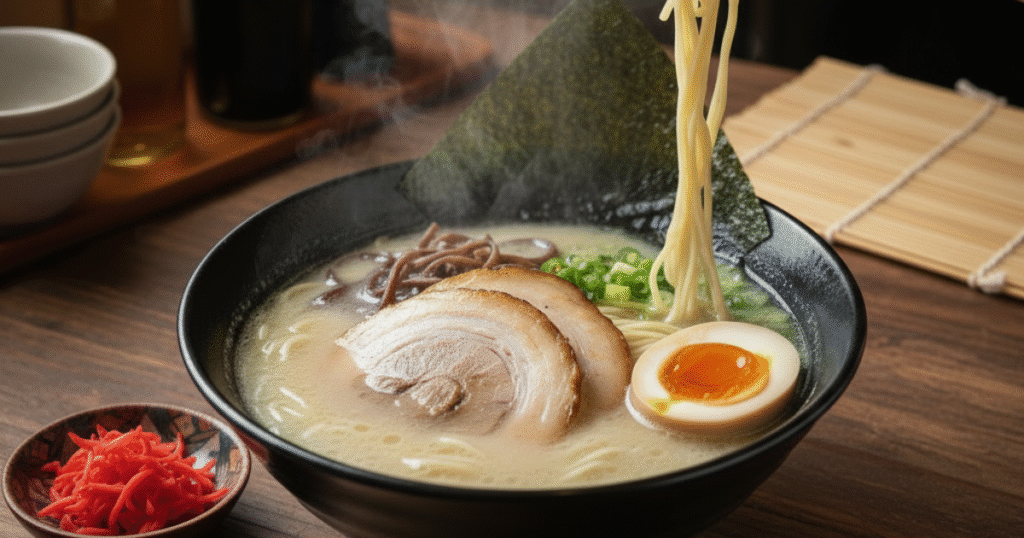
Tips for White Consistency
Keep the heat strong. If you cook on low, the broth will stay clear. Breaking the bones during cooking releases more flavor.
Some ramen shops in Dallas use pressure cookers to finish faster. At home, you can do the same for convenience.
Preparing the Noodles
Type of Noodles
Always use thin, straight noodles. The marutai or sanpo brands are popular choices in Frisco and Addison. Fresh noodles are even better if available.
Cooking Tips
Boil the noodles for less than a minute. Rinse quickly in cold water to stop the cooking. Add them to the broth right before serving. Shops in Allen often ask if you want your noodles soft, medium, or firm.
Essential Toppings
Soft-Boiled Egg
Boil eggs for six minutes, cool them in ice water, peel, and soak in soy sauce, mirin, and sugar for four hours. This creates the dark, flavorful yolk that people love.
Chashu Pork
Marinate pork belly in soy sauce, sake, and sugar. Roll it, tie with string, and simmer for two hours until soft. Slice thin for topping. This pork is often the star in menus across Dallas.
Optional Extras
Garlic oil adds spice, sesame seeds bring crunch. In Frisco, many ramen bowls come with these extras because customers ask for more flavor.
Assembling the Ramen Bowl
Step Order
Place noodles in the bowl first. Pour hot tonkotsu broth over them. Arrange toppings one by one—pork, egg, mushrooms, scallions, and seaweed. Finish with garlic oil if you like.
Presentation Tips
Use a deep bowl to keep soup hot. Place toppings neatly in a circle for balance. In Addison, menus often show bowls arranged this way because it looks beautiful in photos and gets better reviews.
Tips and Variations
Spicy Version
Add chili oil or spicy miso to the broth. Many people in Dallas enjoy this because it gives heat without losing the creamy flavor.
Vegetarian Version
Replace pork bones with mushrooms, soy milk, and seaweed. Add tofu, corn, and other vegetarian toppings. Shops in Allen and Lewisville sometimes offer this lighter style.
Shortcuts
If you don’t have time, use instant marutai or sanpo noodles. Add fresh toppings to make it closer to the real recipe. This works well for busy nights in Frisco.
Serving Suggestions
Side Dishes
Pair your ramen with gyoza dumplings, fried rice, or karaage chicken. In Addison and Dallas, these sides are common on every menu.
Drinks
Green tea, sake, or Japanese beer go well with Hakata ramen. Cold soda is also a good choice to balance the fatty broth.
Conclusion
Why This Recipe Matters
Cooking the Hakata ramen recipe at home gives you full control over flavor, noodles, and toppings. Even though shops in Frisco or Lewisville serve great ramen, nothing feels more original than making it yourself.
Try It at Home
Follow this guide, and you’ll create a bowl better than many local shops near me. Share it with family or friends in Dallas, Allen, or Addison. Your ramen might even get better reviews than the restaurants.


